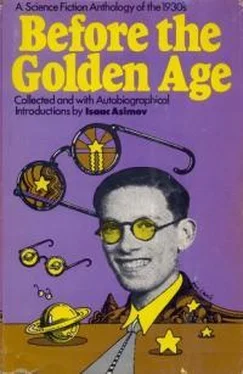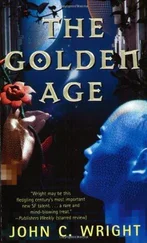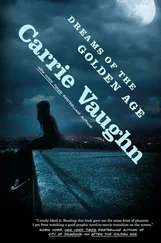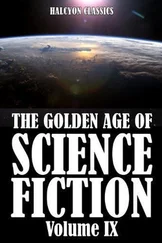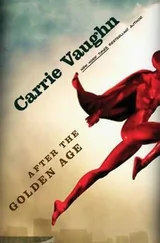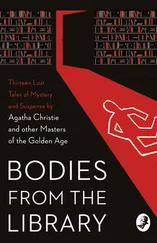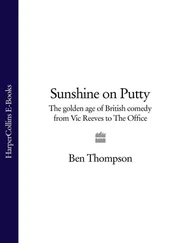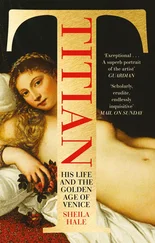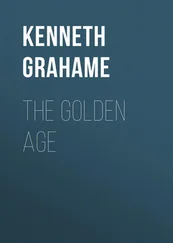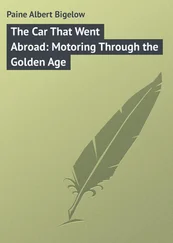Айзек Азимов - Before The Golden Age
Здесь есть возможность читать онлайн «Айзек Азимов - Before The Golden Age» весь текст электронной книги совершенно бесплатно (целиком полную версию без сокращений). В некоторых случаях можно слушать аудио, скачать через торрент в формате fb2 и присутствует краткое содержание. Жанр: Фантастика и фэнтези, на английском языке. Описание произведения, (предисловие) а так же отзывы посетителей доступны на портале библиотеки ЛибКат.
- Название:Before The Golden Age
- Автор:
- Жанр:
- Год:неизвестен
- ISBN:нет данных
- Рейтинг книги:5 / 5. Голосов: 1
-
Избранное:Добавить в избранное
- Отзывы:
-
Ваша оценка:
- 100
- 1
- 2
- 3
- 4
- 5
Before The Golden Age: краткое содержание, описание и аннотация
Предлагаем к чтению аннотацию, описание, краткое содержание или предисловие (зависит от того, что написал сам автор книги «Before The Golden Age»). Если вы не нашли необходимую информацию о книге — напишите в комментариях, мы постараемся отыскать её.
Before The Golden Age — читать онлайн бесплатно полную книгу (весь текст) целиком
Ниже представлен текст книги, разбитый по страницам. Система сохранения места последней прочитанной страницы, позволяет с удобством читать онлайн бесплатно книгу «Before The Golden Age», без необходимости каждый раз заново искать на чём Вы остановились. Поставьте закладку, и сможете в любой момент перейти на страницу, на которой закончили чтение.
Интервал:
Закладка:
I picked up the magazine and, not without considerable qualms, approached my formidable parent. (It is hard for me to believe that at the time he was only thirty-two years old. I took it for granted he was infinitely old—at least as old as Moses.)
I spoke rapidly, pointed out the word “science,” pointed to paintings of futuristic machines inside as an indication of how advanced it was, and (I believe) made it plain that if he said “No” I had every intention of throwing a fit. And that’s where the final item in the concatenation of events came in: my father, driven to distraction by the new baby that was on its way, was in no mood to concern himself with trivia. He granted me permission.
I then scanned the newsstand for any other magazine of the same type, planning to maintain with all the strength at my disposal the legal position that permission for one such magazine implied permission for all the others, even when the word “science” was not in the title.
Promptly I found the August 1929 issue of Amazing Stories and, of course, the August 1929 issue of Air Wonder Stories. I girded myself for the battle. It never came. My mother went to the hospital and my father conceded everything. On July 25, my brother, Stanley, was born.
I wish I could remember the stories in the very first science fiction magazines I ever read, but I can’t. The nearest I can come to it is the fact that I remember the cover story in the August 1929 Amazing Stories to be “Barton’s Island” by Harl Vincent, but I don’t remember the plot.
One of the factors that surely must have helped induce my father to let me read the science fiction magazines was their respectable appearance.
At that time, there were two types of magazines on the stands. There were the smaller magazines, 7 by 10 inches in size, which were printed on cheap paper made of wood pulp, unglazed and with ragged edges. These “pulps” featured action stories in different categories, one magazine being devoted to Westerns, another to mysteries, still another to jungle stories, another to sports stories, yet another to air-war stories, and so on.
My father read some of the pulps himself (to improve his English, he said), but nothing could have induced him to let me read them. We quarreled over The Shadow and Doc Savage for years, and eventually, in my mid-teens, I began to read them defiantly without his permission. He would look at me sorrowfully whenever he caught me reading one of them, too; but though those looks stabbed me to the soul, I kept on reading them.
There were, however, also large-size magazines, 8½ by 11 inches or larger, published on glazed paper of good quality with smooth edges. These were the “slicks.” I doubt that very many of them were any higher in literary quality than the pulps, but they looked better.
Well, Amazing Stories, Science Wonder Stories, and Air Wonder Stories, though printed on pulp paper and sometimes featuring authors who wrote regularly for the pulp magazines, were large-size and had smooth edges. They were kept with the slicks on the newsstands, not with the pulps (oh, what a kiss of death that would have been), and they therefore were to be found in respectable company.
What’s more, where the pulp magazines usually charged ten cents an issue, the three science fiction magazines charged a lordly twenty-five cents, and, as always, high charge was equated with high quality.
In 1927, Gernsback had been faced with an overflow of stories and had put out a special issue of Amazing Stories , which he then still owned, made it thicker than an ordinary one, and called it Amazing Stories Annual. It was a success, and from then on he put out such issues at quarter-year intervals. This Amazing Stories Quarterly continued under the Teck regime, too, and Gernsback, when he started his new magazines, also began Science Wonder Quarterly.
The quarterlies were magnificent. Whereas the ordinary issues of the science fiction magazines contained 96 pages and about 100,000 words of fiction, the quarterlies contained 144 pages and about 150,000 words. The ordinary issues ran novels as serials (usually in three parts), but the quarterlies could run novels entire. Of course, the quarterlies cost fifty cents, an enormous price for those days, and my father didn’t always receive them from the distributing companies, so I missed some copies. When I saw them, though, what an enormous feast they were!
(It occurs to me that if my father had not had a newsstand, there would not have been the slightest possibility of my ever reading science fiction magazines at that time except for such issues as I might—a very unlikely supposition—have borrowed. There was no way on Earth that I could have afforded quarters and half dollars for something as unessential as reading matter. . . . Pardon me while I overcome my trembling fit at the thought, and then I will continue.)
Toward the end of 1929, still another science fiction magazine hit the newsstands, with its first issue dated January 1930. It was called Astounding Stories of Super-Science. The final phrase was soon dropped and it became Astounding Stories. It was published by Clayton Publications and is now referred to as the “Clayton Astounding” to differentiate it from later incarnations.
The Clayton Astounding was clearly a poor relation. For one thing, it was the size and quality of the pulp magazines and was placed with them on the newsstands. I was taken aback, and almost hesitated to try to read it, thinking that I would surely be stopped. However, my father said nothing. Having retreated, he was not prepared to renew the battle.
Astounding Stories published tales that were heavy on adventure and that seemed, to my boyish mind, to be less sophisticated than those in Amazing Stories . In fact, though I read every issue of the Clayton Astounding , all thirty-four, there was not one story in any of those issues that has remained with me to this day, and none are included in this anthology.
The very early stories that I still remember almost all appeared in Amazing Stories, which called itself “The Aristocrat of Science Fiction.” And so it was, in my opinion. During the first four years of my science fiction reading, it was Amazing Stories all the way with me.
And it was the novels that were most impressive. The plots were most intricate, the adventures most detailed, and, most of all, there was the cliff-hanger with which each installment ended. You then had to wait the length of an arid month for the next installment. Some readers, I later discovered, saved their issues so that they could read the serials all at once, but I couldn’t do that, of course. I had to return each issue to the newsstand.
The earliest serial I remember reading and slavering joyously over was Cities in the Air, by Edmond Hamilton, which ran in two parts in Air Wonder Stories, in the November and December 1929 issues. [I have a marvelous memory, but it is not so marvelous that I can remember exact issues for all the stories that I quote, or the exact date for the various items of historical interest I refer to in connection with early magazine science fiction. Actually, I am making liberal use of Donald B. Day’s Index to the Science-Fiction Magazines, 1926-1950 (Perri Press, Portland, Ore., 1952), which I bought twenty years ago and which has paid me back a hundredfold in its constant usefulness as a reference book to the early history of magazine science fiction. There have been a number of supplements put out for the period since 1950 by computers at M.I.T., but they lack the taste and flavor of the Day Index. ] I still remember the dramatic Paul cover illustration for that serial, with skyscraper cities shown on huge circular slabs in mid-air.
Читать дальшеИнтервал:
Закладка:
Похожие книги на «Before The Golden Age»
Представляем Вашему вниманию похожие книги на «Before The Golden Age» списком для выбора. Мы отобрали схожую по названию и смыслу литературу в надежде предоставить читателям больше вариантов отыскать новые, интересные, ещё непрочитанные произведения.
Обсуждение, отзывы о книге «Before The Golden Age» и просто собственные мнения читателей. Оставьте ваши комментарии, напишите, что Вы думаете о произведении, его смысле или главных героях. Укажите что конкретно понравилось, а что нет, и почему Вы так считаете.
